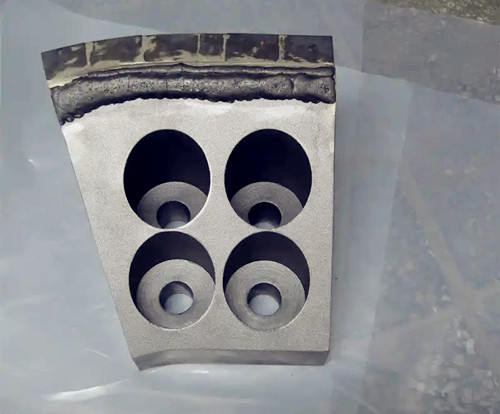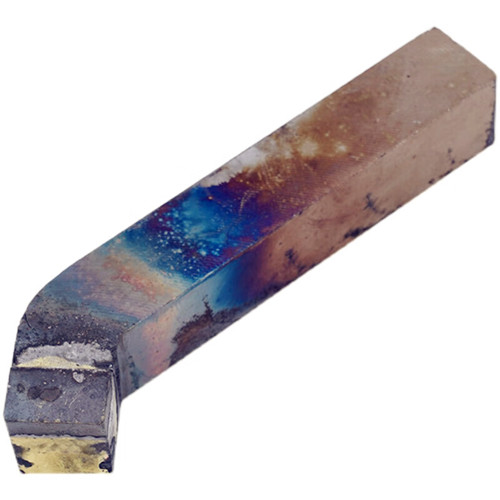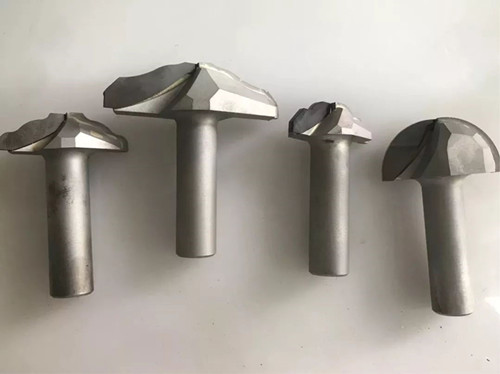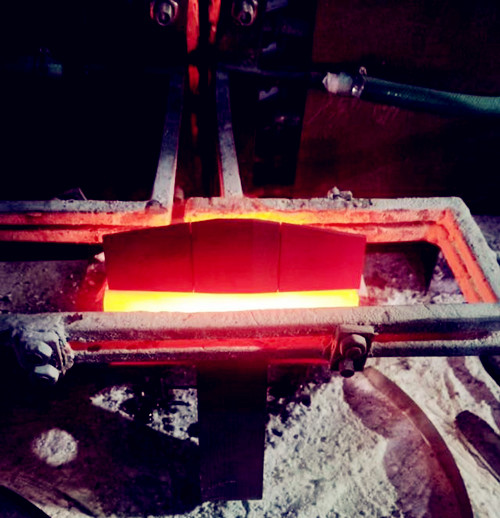How to weld tungsten carbide to steel
1.Brazing welding property:
Tool steel usually includes carbon tool steel, alloy tool steel and high-speed steel, while cemented carbide is made by sintering carbides (such as wolfram carbide, TiC, etc.) and bonding metals (such as Co, etc.) through powder. The brazing welding technology of tool steel and cemented carbide or tungsten carbide is mainly used in the manufacture of cutting tools, molds, measuring tools and mining tools. This article will introduce the welding of tungsten carbide or cemented carbide in detail.

The main problem in tool steel brazing welding is that its structure and performance are easily affected by the brazing process. If the brazing welding process is improper, it is very easy to cause problems such as high-temperature annealing, oxidation and decarburization. For example, the quenching temperature of high-speed steel W18Cr4V is 1260-1280℃. In order to avoid the above problems and ensure the maximum hardness and wear resistance during cutting, the brazing temperature must be adapted to the quenching temperature.
The brazing property of cemented carbide is poor. This is because the carbon content of cemented carbide is high, and the uncleaned surface often contains more free carbon, which hinders the wetting of the brazing material. In addition, cemented carbide is easily oxidized to form an oxide film at the brazing temperature, which will also affect the wetting of the brazing filler metal. Therefore, surface cleaning before brazing is very important to improve the wettability of the brazing filler metal on cemented carbide. If necessary, measures such as surface copper plating or nickel plating can also be taken.
Another problem in cemented carbide brazing or tungsten carbide welding is that the joint is prone to cracking. This is because its linear expansion coefficient is only half of that of low-carbon steel. When cemented carbide is brazed with the substrate of such steel, a large thermal stress will be generated in the joint, resulting in cracking of the joint. Therefore, when brazing cemented carbide with different materials, anti-cracking measures should be taken.

2.Brazing welding materials:
(1)Brazing filler metal Pure copper, copper-zinc and silver-copper brazing fillers are usually used for brazing tool steel and cemented carbide. Pure copper has good wettability for various cemented carbides, but it needs to be brazed in a hydrogen reducing atmosphere to achieve the best effect. At the same time, due to the high brazing temperature, the stress in the joint is large, resulting in an increased tendency to crack. The shear strength of the joint brazed with pure copper is about 150MPa, and the joint plasticity is also high, but it is not suitable for high temperature work.
Copper-zinc brazing filler metal is the most commonly used brazing filler metal for brazing tool steel and cemented carbide. In order to improve the wettability of the brazing filler metal and the strength of the joint, alloy elements such as Mn, Ni, and Fe are often added to the brazing filler metal. For example, B-Cu58ZnMn contains 4% w(Mn), which makes the shear strength of the cemented carbide brazed joint reach 300-320MPa at room temperature: it can still maintain 220-240MPa at 320°C. Adding a small amount of Co to B-Cu58ZnMn can make the shear strength of the brazed joint reach 350MPa, and it has high impact toughness and fatigue strength, which significantly improves the service life of cutting tools and rock drilling tools.
Silver-copper brazing filler metal has a low melting point, and the thermal stress generated by the brazed joint is small, which is conducive to reducing the cracking tendency of cemented carbide during brazing. In order to improve the wettability of the brazing filler metal and increase the strength and working temperature of the joint, alloy elements such as Mn and Ni are often added to the brazing filler metal. For example, the B-Ag50CuZnCdNi brazing filler metal has excellent wettability on cemented carbide, and the brazed joint has good comprehensive performance.

In addition to the above three types of brazing fillers, Mn-based and Ni-based brazing fillers, such as B-Mn50NiCuCrCo and B-Ni75CrSiB, can be used for cemented carbide working above 500°C and with high joint strength requirements. For brazing of high-speed steel, a special brazing filler metal with a brazing temperature that matches the quenching temperature should be selected, as shown in Table 3, this type of brazing filler metal is divided into two categories. One is the ferromanganese brazing filler metal, which is mainly composed of ferromanganese and borax. The shear strength of the brazed joint is generally about 100MPa, but the joint is prone to cracks: the other is a special copper alloy containing Ni, Fe, Mn and Si. The joint brazed with it is not easy to crack, and its shear strength can be increased to 300MPa.
(2)Brazing flux and shielding gas The choice of brazing flux should be matched with the base material to be welded and the selected brazing filler metal. When brazing tool steel and cemented carbide, the brazing flux used is mainly borax and boric acid, and some fluorides (KF, NaF, CaF2, etc.) are added. Copper-zinc brazing filler metals are equipped with FB301, FB302 and FBl05 brazing fluxes, and silver-copper brazing filler metals are equipped with FBl01~FBl04 brazing fluxes. When brazing high-speed steel with special brazing filler metals, borax brazing flux is mainly used.
In order to prevent oxidation of tool steel during brazing heating and to avoid cleaning after brazing, gas shielded brazing can be used. The shielding gas can be an inert gas or a reducing gas, and the dew point of the gas is required to be lower than -40°C. Cemented carbide can be brazed under hydrogen protection, and the dew point of the required hydrogen should be lower than -59°C.
3.Brazing technology:
Tool steel must be cleaned before brazing, and the machined surface does not need to be too smooth to facilitate the wetting and spreading of the brazing filler metal and brazing agent. The surface of cemented carbide should be sandblasted or polished with silicon carbide or diamond grinding wheel before brazing to remove excess carbon on the surface so that it can be wetted by the brazing filler metal during brazing. Cemented carbide containing titanium carbide is more difficult to wet. By coating copper oxide or nickel oxide paste on its surface and baking it in a reducing atmosphere to make copper or nickel transition to the surface, the wettability of the brazing filler metal is enhanced.

Carbon tool steel brazing is best performed before or at the same time as the quenching process. If brazing is performed before the quenching process, the solidus temperature of the brazing filler metal used should be higher than the quenching temperature range so that the weldment still has a high enough strength when reheated to the quenching temperature and does not fail. When brazing and quenching are performed together, a brazing filler metal with a solidus temperature close to the quenching temperature should be selected. Alloy tool steel has a wide range of composition. Appropriate brazing filler metal, heat treatment process and technology combining brazing and heat treatment process should be determined according to the specific steel type to obtain good joint performance.
The quenching temperature of high-speed steel is generally higher than the melting temperature of silver-copper and copper-zinc brazing filler metals. Therefore, it is necessary to quench before brazing and braze during or after secondary tempering. If quenching must be performed after brazing, only the aforementioned special brazing filler metal can be used for brazing. It is more appropriate to use a coke furnace when brazing high-speed steel tools. When the brazing filler metal melts, take out the tool and pressurize it immediately to squeeze out the excess brazing filler metal, then oil quench it, and then temper it at 550-570℃.
When brazing carbide blades and steel tool holders, it is advisable to increase the brazing gap and apply plastic compensation gaskets in the brazing gap, and slow cooling after welding to reduce brazing stress, prevent cracks, and extend the service life of carbide tool components. After brazing, the flux residue on the weldment should be washed with hot water or a general slag removal mixture, and then pickled with a suitable pickling solution to remove the oxide film on the base tool bar. However, be careful not to use nitric acid solution to prevent corrosion of the brazing metal.
